|
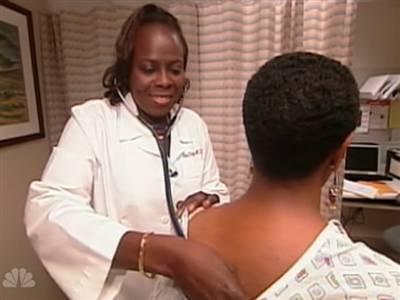
HEALTH DAY
CULTURAL RESOURCES
Sunday, February 27, 2011
Barbara E. Headley, Guest Cultural Resource Commentator
Consultant, Selah Educational and Ministry Resources; Deputy Chaplain Connecticut State Senate
I. Introduction
It was my first official day back to work after a three-month pastoral sabbatical. It was long overdue but I had finally admitted that I needed time to rest and take life at a slower pace than I had for the first seven years of my pastorate. I had been ignoring the signs of stress—high blood pressure, weight gain, and irritability—for a while, and I knew that if I wanted to continue to be effective in ministry I would have to change some things. My sabbatical was a step in that direction.
Now I was back and ready to get back into things at full speed. I finished my first day comforting the family of a member of the church who was in the last stages of AIDS and was dying. After meeting and praying with the family at the hospital I headed home. As I pulled into my garage my cell phone rang. It was the chaplain at the hospital I had just left, inquiring if I knew a woman from New York City who had just been brought to the emergency room. When she gave me her name I realized that indeed I did know her; she was a friend and member of my home church in the Bronx. I quickly got back in my car and returned to the hospital. When I walked into the emergency room she was sitting on a stretcher busy talking on her cell phone. When she saw me her face lit up and we embraced. I chastised her about being in town and not contacting me. She informed me that she was in town only for the day to attend a training session for her new job. She had a successful career as a financial business professional and was one of the first African American women to be made a vice president of one of the major banks in New York City. She told me that when the training had ended she was waiting for her limo to go back to New York when she began to feel “funny.” She had experienced a stroke a year and a half ago that had left her partially paralyzed on her right side. So she decided not to take any chances and instructed the driver to take her to a hospital.
Now in the emergency room she was feeling better and was looking forward to getting back to New York. She amazed me with her drive and determination. Even after the previous stroke she refused to slow down. Though she could no longer use her right arm, drive her new Mercedes, or dress herself completely and she walked with a cane, she refused to let go of her busy lifestyle. She hired personal help at home and a driver to get her to work and to her meetings. She was determined to continue being who she had always been—a successful black woman on the go. We talked and joked until the physician said he wanted her to stay the night so that they could run some tests. I left telling her that I would be back in the morning.
When I returned the next morning I was in complete shock to find her semi-comatose and on a ventilator. “What happened?” I asked the physician. He informed me that she apparently was experiencing a second stroke when she came in the day before and during the night it advanced into another full stroke, this time paralyzing her other side. I stood in the emergency room in shock and disbelief. Being a physical therapist before entering the ministry, I knew the life implications of this event. I believed in God’s power to heal but I also knew medically her chances of recovery were slim. “How could this have happened?” I asked God. She was a devout Christian, the daughter of a Baptist pastor. She was only 52 years old and was just getting back on track from her first stroke. Just a few weeks before, we had prayed over the phone about her new job. What I didn’t know was that my friend had type II diabetes and uncontrolled hypertension. She had always been an ambitious and successful businesswoman, one that I and others in our home church admired.
For days afterward I visited her and stood by her bedside watching her struggle to come to consciousness only to find herself cognitively aware and trapped in a body that would no longer move at her command. Unable to speak or move, she would move her eyes, in attempts to communicate with whoever came into her room. As I stood by her bedside with tears in my eyes, I felt a voice inside me saying, “This will be you if you don’t slow down.” This hit me in my core as I pondered my own health and that of church members, friends, and clergy colleagues. A few months earlier a friend had collapsed in her pulpit and was put on bed rest for six weeks. Another young pastor and former student had a heart attack within one year of taking on his first pastorate. It wasn’t any better among the members of the church. More members were confiding in me that they or a family member were suffering from a number of ailments such as cancer, AIDS, kidney failure, diabetes, or heart disease. A health crisis was occurring not only within our society but also within our churches.
As Christians we are called to lead godly lives that are examples of good health and to care for the body temples that God has given us. But evidence shows that as the people of God, many of us are poor examples of good health, both in the pulpit and in the pew.
II. History and Health Statistics of African Americans
America is in the midst of a health crisis! Never before have so many Americans been so unhealthy and so unfit. The federal government recently released a report on the health of Americans. According to the report, Americans are experiencing the worst health status in generations.1 The report gave the following health statistics for American adults age 20 and over: 26.8 million have heart disease; 16% (49.2 million) have high serum cholesterol; 32% (117 million) have hypertension; 10% (30 million) have diabetes; 34% (104 million) are obese; and 34% (308 million) are overweight.2
While these statistics are extremely disturbing for Americans as a whole, the health statistics for African Americans are even more alarming. According to the Office of Minority Health of the U.S. Department of Health and Human Services, African American adults are 40% more likely to have high blood pressure, be diagnosed with coronary heart disease, and are more likely to die from heart disease.3 Reports from the Center for Disease Control state that African Americans are twice as likely to have diabetes and twice as likely to die from it. African American women are 34% more likely to die from breast cancer, and both African American males and females are almost 2 times more likely to have a stroke than white Americans and 60% more likely to die from a stroke.4 The Center for Disease Control and Prevention reports that among African Americans: 60% men and 78% women are identified as overweight and 28.8% African American men and 50.8% African American women are considered obese. African Americans are two times more likely to develop diabetes than Caucasian Americans. Obesity tends to be one of the major risk factors for developing diabetes in African Americans, especially African American women.5 Other facts about the health of African Americans include the following:
- African Americans tend to get high blood pressure earlier in life and often have more severe high blood pressure.6
- African Americans are more likely to suffer from higher incidences of diabetes complications and disability such as amputations of lower extremities, kidney failure, and diabetic retinopathy.7
- 75% of all new cases of HIV/AIDS infections are occurring within the black community and among African American women.8
There are many theories about the reasons and causes for these health disparities within the black community, such as poor access to health care or the lack of health insurance. But we must also take personal responsibility for the benign neglect of our health and the health of our families. While more African Americans have access to medical care today, less of us are engaged in healthy lifestyles or the prevention of chronic and disabling diseases. We must address the causes of poor health in the African American community and work to reverse the damaging effects of illness and disease. We must also find ways to promote disease prevention, healthy lifestyles, and wellness not only for us today but for future generations.
III. The Role of the Church
The black church is uniquely positioned to be a place that can promote and exemplify healthy living and wellness. Historically the black church has been not only the center of worship and religious life within the black community but also a place where critical issues facing African Americans have been addressed. In the past, the black church has cared for and supported its members during times of sickness. It was often the mothers of the church, the nurses unit, or the church’s missionary group that cared for ill members. Today the church must not only give aid in the time of sickness but also be proactive in promoting health and wellness from the pulpit and the pew.
As a promoter of good health and healthy living, the church can provide health and wellness education that is correct, useful, and culturally sensitive for its members. The church has the advantage of being able to address issues that will challenge its members and the community to live healthier by changing personal habits and lifestyles as a response to their faith in God. Research has shown that faith-based health programs can be very successful in promoting and reinforcing healthy lifestyle changes.9 Pre-existing ministries and new ministries created out of necessity within local churches can provide the communal support, fellowship, and accountability often needed for successful changes in lifestyles and the attainment of good health.
IV. Examples of Good Health Practices by Churches
Many church health and wellness ministries get started following a revelation or personal experience on the part of the pastor or others leaders within the church. Such was the case at New Community Church in LaGrange, Georgia, where the Reverend Ricky Bolden is the pastor. The beginnings of the church’s successful health ministry is recorded in Live Healthy in Faith: A Faith Community Guide to Promoting Nutrition and Physical Activity; this is a manual for developing health ministries in faith communities, produced by the Georgia Department of Human Resources (DHR).10 After becoming alarmed at the number of prayer requests concerning health issues within his congregation and becoming more aware of his own developing health challenges, Pastor Bolden and his staff started a “Healthy Lifestyles” series at New Community Church. The series began with a “Biggest Loser” contest—a 30-day weight loss challenge for the entire church. The result was an incredible loss of 5,000 lbs. by the congregation. This was accomplished by members increasing their intake of fruits and vegetables and adding exercise to their daily routines.11 New Community Church’s health promotion campaign yielded exceptional results.
Not every church may have the same impact, but every church can begin the journey with its members towards wellness by providing information and opportunities that promote health by utilizing already established programs and ministries within their church. Below are some ideas and suggestions to get started:
Health & Wellness Bulletin Inserts—Provide monthly or quarterly health information inserts in the bulletin. Many health organizations such as the American Diabetes Association, the American Heart Association, and the American Cancer Society will provide this information free to churches and community organizations.
Wellness Moments—Set aside time during the morning worship service for health and wellness informational announcements, verbally or on screens.
Specific Health Awareness Events—Have groups in the church sponsor a specific health awareness event (e.g. prostate cancer by the Men’s Ministry, breast cancer by Women’s Fellowship, or Sexually Transmittable Diseases by your Teen or Young Adult ministry).
 Walking for Jesus—Plan a church-wide walking event to help promote physical activity among all ages.
Walking for Jesus—Plan a church-wide walking event to help promote physical activity among all ages.
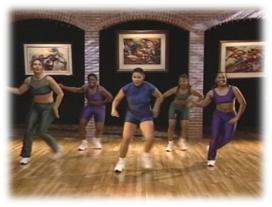 Praise & Exercise—Start a gospel aerobics class, yoga, Pilates, or Zumba class at your church to encourage movement for all ages and sizes.
Praise & Exercise—Start a gospel aerobics class, yoga, Pilates, or Zumba class at your church to encourage movement for all ages and sizes.
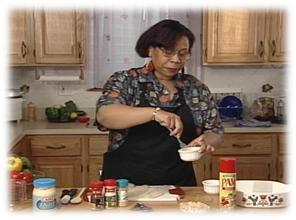 Healthy Cooking Classes—Help members eat healthier by providing cooking classes that teach preparation of favorite ethnic foods cooked in healthier ways.
Healthy Cooking Classes—Help members eat healthier by providing cooking classes that teach preparation of favorite ethnic foods cooked in healthier ways.
V. A Word about Pastors and Health
The support and involvement of pastors is vital to the success of health enhancement ministries within churches. But it is also important that pastors get support and encouragement to maintain their own health and well-being. Recent studies have shown that many clergy are facing their own health crisis. A national survey conducted by Duke Divinity School in 2004 of more than 2,500 Christian religious leaders revealed some startling information. The survey showed that “76% of Christian clergy were either overweight or obese, 15% points higher than for the general U.S. population.”12 Other research has also shown that clergy across all faith communities are experiencing higher rates of obesity, hypertension, diabetes, and other ailments than members of their congregations.13 Stephanie Paulsell, author of the book Honoring the Body: Meditations on a Christian Practice, believes that much of the clergy health problem may be rooted in the very nature of ministry today or what she calls “the overwhelmingness of ministry.”14
Church culture and the demands upon clergy today are radically different from that of just a generation ago. The dedication, sense of calling, and deep desire to help others can put many clergy at risk for burn-out and illness. Most clergy will not confess that they are weary, ill, depressed, or on the verge of burn-out for fear that it will be seen as a sign of weakness or at some level a confession of unfitness for ministry or that it will lessen their power in the church or even endanger their job. Other than pastors’ families, congregations are not usually aware of the physical and emotional load their pastors carry. Most see their pastor as invincible men or women of God, and some clergy want to live up to that image.
But something is wrong when clergy suffer from life-threatening physical and emotional strain but somehow believe that it is what God requires. In his book Rest in the Storm: Self-Care Strategies for Clergy and Other Caregivers, Dr. Kirk Byron Jones calls this “a form of self-violence.”15 He states, “The proliferation of unrealistic pastoral expectations in our churches is the result of uncritical acceptance of traditional expectations that are augmented by new demands in our changing world.”16
Pastors and priests continue to be the Church’s primary role models, for good or for bad. They are held up before congregations and communities as examples of abundant life and godly living. As such, pastors must ask the question, “What example am I setting for God’s people?” A healthy pastor who lives a balanced life can help a congregation also be healthy and whole as well. Churches seeking to promote health and wellness should also be intentional about finding ways to encourage and support the wellness and health of their pastors and all of their clergy.
There are a number of programs that support clergy health and wellness such as the National Clergy Renewal Program of the Lilly Endowment, which funds pastoral sabbaticals. The Alban Institute is also another great resource for information and resources on clergy health, wellness, and renewal. Many denominations also have programs to helps pastors and churches foster clergy wellness. Churches themselves can also help pastors and ministers become healthier with the following suggestions:
- Encourage your pastor to create a “self-care” or “wellness” covenant that outlines steps he or she will take to maintain their health and well-being physically and spiritually, and support him or her in keeping the covenant.
- Create a “Mutual Ministry Covenant” between the congregation and pastor that celebrates the shared responsibilities of the ministries of the church. This can include a Mutual Ministry Sunday when the covenant is read, celebrated, and agreed to by all parties.
- Honor the time-off days established for the pastor and other ministers. Give pastors and ministers the permission to take time to take care of themselves without feeling guilty.
- Encourage the pastor to engage in more physical activity—i.e. cancel a meeting and instead have a “walk with the pastor” event. This will not only encourage walking as a good exercise but also build and nurture pastoral and congregational relationships.
- Instead of cake or sweet potato pie, give the pastor a gift certificate for a massage, spa day, or admission as a guest to a neighborhood health facility. For his or her birthday each year, make sure that at least one of the gifts is one that will absolutely contribute to the pastor’s health and well-being.
- Pastor’s Aide Ministries can make sure that healthy food (fruits and vegetables) are available in the pastor’s office.
These are just small ways of encouraging and supporting clergy in remaining healthy and whole for the journey of ministry with God’s people.
VI. Community Partnerships
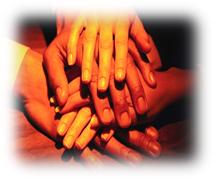 Health and wellness programs and ministries can also be developed by partnering with community health organizations such as local hospitals, public health departments, health coalitions, and public and private organizations, as well as the mass media to provide health education and disease prevention to the church and community. Collaborations between faith communities, academic institutions, foundations, and government health agencies can provide resources that can have great impact on improving the health within African American communities. Health and wellness programs and ministries can also be developed by partnering with community health organizations such as local hospitals, public health departments, health coalitions, and public and private organizations, as well as the mass media to provide health education and disease prevention to the church and community. Collaborations between faith communities, academic institutions, foundations, and government health agencies can provide resources that can have great impact on improving the health within African American communities.
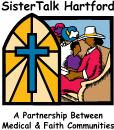 One such program of community collaboration is SisterTalk Hartford in Hartford, Connecticut. One such program of community collaboration is SisterTalk Hartford in Hartford, Connecticut.
SisterTalk Hartford is a faith-based weight loss and weight control program designed for and by African American and black women in partnership with the medical and faith communities in the city of Hartford. “The creation of SisterTalk Hartford was motivated by an interest on the part of Hartford’s African American church leaders to offer an effective solution to the obesity and weight problem in their congregations and communities. This effort represented a truly unique and groundbreaking collaboration among members of the Hartford community—a first-of-its-kind partnership—between local healthcare leaders and African American clergy…. Between 2002 and 2006, twelve African American churches from seven different denominations partnered with the University of Connecticut Health Center, Saint Francis Hospital and Medical Center, and Brown University to develop and deliver this effective faith-based health promotion program for women. Funding to support the research and initial program phases of SisterTalk Hartford were provided by the Patrick and Catherine Weldon Donaghue Medical Research Foundation and the Connecticut Health Foundation.”17 I believe that one of the reasons for the success of SisterTalk Hartford is its faith-based and church-centered components. The familiarity and fellowship of church women provided the support and fellowship that helped many women make lifestyle changes. A sample video clip of a SisterTalk session can be found on the SisterTalk Hartford Resource website: http://www.sistertalkhartford.org/samplevideos.html.
VII. Songs That Speak to the Moment
Music has always been a way in which African Americans have expressed their faith and hopes for a better life—one free from oppression and free from sickness. Some of these songs express our collective belief in an eternal life where there would be no more sickness or death. Now, we must expand our understanding of what God has made available to us in Christ and seek to lead the way in bringing healthy lifestyles and wellness to our churches and our communities here on earth. We can help do this by singing familiar songs that not only celebrate that we have a God we can go to in the time of sickness but also a God who can empower us to live healthy lives and have victory over health-destroying lifestyles. We can sing familiar songs in our churches that can have new meaning as we claim our right to health and wellness. The following hymns are well known in most African American churches and can have new meaning in our search for health and wellness.
In the familiar hymn “Higher Ground,” written by Johnson Oatman, Jr., we are encouraged to press upward and onward to heights above our circumstances and situations. Verses one through three are great encouragement for us to press through the obstacles to good health. We are reminded that each day we gain new ground towards new habits and new ways of being healthy and whole.
Higher Ground
Refrain:
Lord, life me up and let me stand
By faith on heaven’s tableland;
a higher plane than I have found,
Lord, plant my feet on higher ground.
I’m pressing on the upward way,
New heights I’m gaining ev’ry day;
Still praying as I’m on-ward bound,
Lord, plant my feet on higher ground.
My heart has no desire to stay
Where doubts arise and fears dismay;
Thought some may dwell where these abound,
My prayer, my aim, is higher ground.
I want to live above the world,
Though Satan’s darts at me are hurled;
For faith has caught a joyful sound,
The song of saints on higher ground.18
The short praise song “Sanctuary,” written by John Thompson and Randy Scruggs, reminds us that our bodies are the sanctuaries (temples) of God’s Holy Spirit. It reminds us that we are to “prepare” our temples, God’s sanctuaries, our bodies, to be pure, holy, and fit for God’s use.
Sanctuary
Lord Prepare Me
To be a sanctuary
Pure and holy
Tried and true
With thanksgiving
I’ll be a living
sanctuary for You.19
“Yield Not to Temptation,” this well-known hymn of the church, can have new meaning when the collective body commits to live healthier lives. Any real effort to live healthier will involve resisting the temptations that surround us and tempt us to conform to the unhealthy habits in the world. Verses 1 and 3 below suggest that in order to resist the daily temptations that sabotage our walk towards health we will need to look to Jesus for strength and determination.
Yield Not to Temptation
Yield not to temptation
For yielding is sin;
Each victory will help you,
Some other to win;
Fight valiantly onward,
Evil passions subdue;
Refrain:
Look, ever to Jesus,
He will carry you through.
Ask the Savior to help you,
Comfort, strengthen and keep you
He is willing to aid you,
He will carry you through.
To him that overcometh,
God giveth a crown;
Through faith we will conquer,
Though often cast down;
He who is our Savior,
Our strength will renew.20
VIII. Additional Resources for Developing Health Ministries
Websites
- Body & Soul: A Celebration of Healthy Eating and Living—This is a health program with a long track record that was developed for African American churches. The program empowers church members to eat a healthy diet rich in fruits and vegetables every day for better health. Churches that embrace Body & Soul help their members take care of their bodies as well as their spirits. Online location: www.aarth.org accessed 5 December 2010
- The Health Cabinet: How to Start a Wellness Committee in Your Church by Jill Westberg McNamara—This is a helpful resource that is available from The International Parish Nurse Resource Center in Park Ridge, IL. Phone number: 800-556-5368. Online location: http:ipnrc.parishnurses.org/ accessed 5 December 2010
- Live Healthy in Faith: A Faith Community Guide to Promoting Nutrition and Physical Activity—This is a user-friendly step-by-step manual for developing health ministries in faith communities. It was produced by the Georgia Department of Human Resources (DHR) as part of the DHR Division of Public Health’s “Take Charge of Your Health Georgia!” initiative in 2003. Online location:
http://www.district4health.org/pdf/faithbased%20toolkit.pdf accessed 5 December 2010
- Live Healthy in Faith: Developing a Health Ministry Resource Guide Power-Point—This PowerPoint presentation can be downloaded as a free PDF and has excellent ideas for starting and maintaining a health program in faith communities. Online location: http://apha.confex.com/recording/apha/135am/pdf/free/ 4db77adf5df9fff0d3caf5cafe28f496/paper157499_3.pdf accessed 5 December 2010
- International Parish Nurse Resource Center Resource Catalog—This resource is provided by the International Parish Nurse organization (IPN); it is a good catalog of resources for establishing a parish nurse ministry. Online location: www.parishnurses.org accessed 5 December 2010
- SisterTalk Hartford—SisterTalk Hartford is an evidence and faith-based weight loss and weight control program designed by and for African American women. This faith-based, medically-sound, support-group program uses faith, community, and sisterhood to establish positive eating habits and lifestyle changes. Online location: www.sistertalkhartford.org accessed 5 December 2010
- Project Brotherhood—This is a community-based outreach and prevention program that creates a “safe” place for black men residing in the Woodlawn and other surrounding south side communities of Chicago, Illinois to come and seek health services. Online location: www.projectbrotherhood.net accessed 5 December 2010
- The Black Barbershop Health Outreach Program—This innovative outreach program located in Los Angeles, California makes use of barbershops as familiar and safe places to provide African American men with screenings for diabetes, hypertension, and prostate cancer. Health education and referrals to physicians are also provided. Online location: www.blackbarbershop.org accessed 5 December 2010
Health-Related Non-Profit Organizations
Books on African American Health & Health Ministries
1. Davis, Kara. Spiritual Secrets to Weight Loss. Lake Mary, FL: Siloam Press, 2008.
2. Domar, Alice D. Self-Nurture: Learning to Care for Yourself as Effectively as You Care for Everyone Else. New York, NY: Penguin, 2001.
3. Hamilton, Edwin H. Health and Wellness in the African American Church: Preventive Health Education. Richmond, VA: Xulon Press, 2004.
4. Jones, Kirk Byron. Rest in the Storm: Self-Care Strategies for Clergy And Other Caregivers. Valley Forge, PA: Judson Press, 2001.
5. McNamara, Jill Westberg. Health and Wellness: What Your Faith Community Can Do. Cleveland, OH: Pilgrim Press, 2006.
6. Melander, Rochelle, and Harold Eppley. The Spiritual Leader’s Guide to Self-Care. Bethesda, MD: The Alban Institute, 2002.
7. Patterson, Deborah L. Health Ministries: A Primer for Clergy and Congregations. Cleveland, OH: Pilgrim Press, 2008.
8. Sevier, Melissa Bane. Journeying Toward Renewal. Bethesda, MD: The Alban Institute, 2002.
Notes
1. U.S. Department of Health and Human Services. National Center for Health Statistics. “Health, United States 2009: With Special Feature on Medical Technology.” Washington: 2009. Online location: http://www.cdc.gov/nchs/data/hus/hus09.pdf accessed 5 January 2011
2. Ibid., pp. 43–50.
3. U.S. Department of Health and Human Services. Office of Minority Health. “African American Profile.” Washington: 21 October 2009. Online location: http://minorityhealth.hhs.gov/templates/browse.aspx?lvl=2&lvlID=29 accessed 5 January 2011
4. Ibid.
5. U.S. Department of Health and Human Services. Center for Disease Control & Prevention. “Data & Statistics.” Washington: 20 September 2010. Online location: www.cdc.gov/datastatistics accessed 5 January 2011
6. U.S. Department of Health and Human Services. Center for Disease Control & Prevention. Office of Minority Health & Health Disparities (OMHD). “Eliminate Disparities in Cardiovascular Diseases (CVD).” Washington: 7 June 2007. Online location: http://www.cdc.gov/omhd/AMH/factsheets/cardio.htm accessed 5 January 2011
7. U.S. Department of Health and Human Services. Center for Disease Control & Prevention. Office of Minority Health & Health Disparities (OMHD). “Eliminate Disparities in Diabetes.” Washington: 26 March 2008. Online location: http://www.cdc.gov/omhd/AMH/factsheets/diabetes.htm accessed 5 January 2011
8. U.S. Department of Health and Human Services. Center for Disease Control & Prevention. Office of Minority Health & Health Disparities (OMHD). “Eliminate Disparities in HIV and AIDS.” Washington: 5 Jun 2007. Online location: http://www.cdc.gov/omhd/AMH/factsheets/hiv.htm accessed 5 January 2011
9. Fifield, J., and M. McKinney, C. Henderson, J. Burleson, M. Peele, L. Gonzalez, and B. Bartlette (2005). “Hospitals and Churches Partnership for Health: A SisterTalk Weight Control Study.” Presented at the Annual Meeting of North American Primary Care Research Group, Quebec City, Quebec, Canada.
10. The Georgia Department of Human Resources. “Live Healthy in Faith: A Faith Community Guide to Promoting Nutrition and Physical Activity.” District 4 Public Health. Online location: http://www.district4health.org/pdf/faithbased%20toolkit.pdf accessed 5 January 2011
11. Ibid., p. 3.
12. Clergy Health Initiative. Faith & Leadership. 2010. Duke Divinity School.
Online location: http://divinity.duke.edu/initiatives-centers/clergy-health-initiative accessed 5 January 2011; See also, “Shaping the Health of the Community: Pastor, what does your congregation do to demonstrate care for the physical health of your members?” The Connection Clergy Health Initiative Duke University. 12 January 2011. Online location: http://divinity.duke.edu/initiatives-centers/clergy-health-initiative/connection/shaping-health-community accessed 20 January 2011
13. “Canadian Study Finds Canadian Clergy Burned Out and Isolated.” News Analysis. The Presbyterian Outlook. Presbyterian Church of Canada. 09 Oct. 2006. 18 Jan 2011. Online location: http://www.pres-outlook.com/news-and-analysis/1-news-a-analysis/3079.html accessed 5 January 2011
14. Paulsell, Stephanie. Honoring the Body: Meditations on a Christian Practice. Hoboken, NJ: Jossey-Bass, 2003.
15. Jones, Kirk Byron. Rest in the Storm: Self-Care Strategies for Clergy and Other Caregivers. Valley Forge, PA: Judson Press, 2001. p. 2.
16. Ibid.
17. “About SisterTalk Hartford.” SisterTalk Hartford/University of Connecticut Health Center. August, 2009. University of Connecticut Health Center. Online location: www.sistertalkhartford.org accessed 5 January 2011
18. “Higher Ground.” African American Heritage Hymnal. Chicago, IL. GIA Publications, 2001. #419.
19. “Sanctuary.” African American Heritage Hymnal. Chicago, IL. GIA Publications, 2001. #462.
20. “Yield Not to Temptation.” African American Heritage Hymnal. Chicago, IL. GIA Publications, 2001. #429.
|